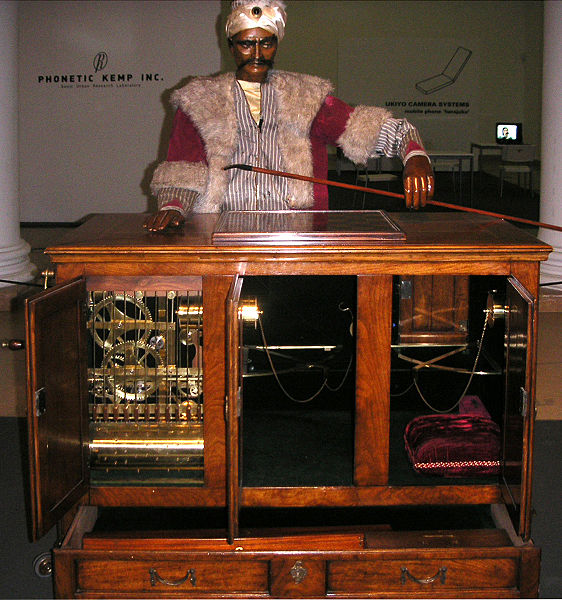
Figure 1 – A replica of the “The Turk,” a fraudulent eighteenth century chess playing machine. From the Wikimedia Commons originally uploladed by Carafe and in the public domain under creative commons license.
I have to apologize because I feel the need today to deviate a bit off topic – never one hundred percent. I am incensed. Yesterday in the groggy hours of morning, you know when that is. It is when there is no choice on television except between reruns of “Frasier” and “I Love Lucy,” and when you are sitting in a stupor, sipping your coffee, I was confronted with a television commercial for “Perfect Polly.” Perfect Polly is a mechanical parakeet that has a motion detector in her chest that causes her to move her head from side to side and to chirp incessantly. I am pretty sure that my cat would be wholly unconvinced. She knows full well that her “Squeeky Mouse” is a fraud. Still she happily disembowels him of his squeaker and drops his lifeless carcass, like so much carrion, in her water bowl.
We have spoken at length in this blog about the human machine interface, about the intelligent camera, and about the coming of The Singularity and a new bionic age. I was encouraged by a recent news clip showing a truly bionic leg prosthesis in operation. The Singularity is near, people. But a mechanical parakeet? Come on! It is an insult to parakeets everywhere, including my friend Wendy’s little bird MJ. I never tire of Wendy’s photos of MJ sharing her Cheerios. That is cross-species bonding. But a mechanical parakeet. This is not what we have been talking about, and it joins robot dogs (remember those?) in the dredge heap of useless things. Perfect Polly is of the genre of mechanical people and animals in ancient clockworks.
And Perfect Polly is reminiscint of “The Turk.” The Turk at least has an interesting story and is closely related to the Turing Test of whether a machine is a machine or a human and how would you test it to know. The Turk was a fake chess-playing machine constructed in the late 18th century. Between 1770 and 1854, when it was destroyed by fire, it was repeatedly exhibited as an automatron, even after it was exposed in the early 1820s as an elaborate hoax. Constructed and unveiled in 1770 by Wolfgang von Kempelen (1734–1804) to impress the Empress Maria Theresa of Austria, The Turk appeared to play a mean game of chess chess against a human opponent.
The Turk was, in fact, a mechanical illusion that allowed a human chess master hiding inside to operate the mechanism. Over the course of 84 years, The Turk won most of the games it played during its demonstrations and defeated many challengers including: Napoleon Bonaparte and Benjamin Franklin. Probably the most famous analysis of The Turk and whether it was a fraud or an actual automatron was by Edgar Alan Poe and entitled “Maelzel’s Chess Player.” Many of Poe’s arguements are incorrect. Yet, in a sense, the essay is significant in that it anticipates “The Turing Test.”
So a big hurrumph for Perfect Polly. As for The Turk, I should point out that on May 11, 1997, a chess playing machine developed by IBM defeated then world champion Garry Kasparov in a six game match. The age of “thinking” machines is upon us as witnessed by Deep Blue and our modern digital cameras. It just has nothing to do with Perfect Polly!
